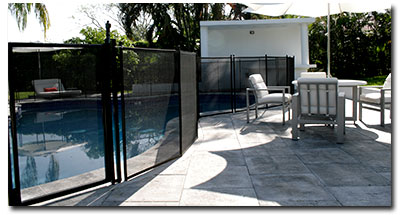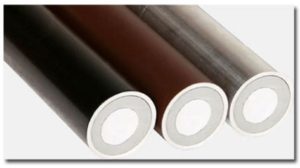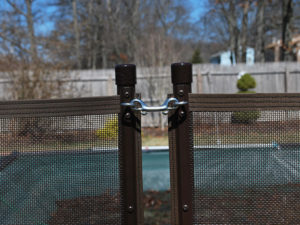 What are the best pool fences? Homeowners have many choices for installing a pool fence. Pool fences separate the pool from the rest of your property without any open areas leading to the pool. It is important to choose pool fences that will work for you.
What are the best pool fences? Homeowners have many choices for installing a pool fence. Pool fences separate the pool from the rest of your property without any open areas leading to the pool. It is important to choose pool fences that will work for you.
Do-It-Yourself Pool Fences. Are They The Best Option?
Your first option would be installing them yourself and buying a pool fence DIY online. Depending on your needs, this may or may not be the best plan. Consulting a local professional is advised. However if you do look online, you will find many options available on Amazon, for example. The cost for a Pool Fence DIY ranges from $9.00 per foot to $12.00 per foot, plus drill rental, shipping, and accessories.
In my opinion, all the do-it-yourself pool fences are the same quality and are manufactured overseas. So paying more doesn’t mean you’re getting the best quality. However, all these fences are made and sold with the assumption that the fence is being installed into a concrete deck. The sleeves are only 3″ to 4″ long and do not work in other deck surfaces such as Pavers, Bricks, dirt or wood. In these surfaces, the sleeve just isn’t long enough. A paver deck sits on a bed of sand that’s either on a crushed rock surface or a dry mix of cement surface. In either case, the brick or paver is typically about 3″ long. So what that means is if you used the sleeves that the fence came with? It would only take a push or a wind gust to knock it down.
A pool fence only works if the foundation is strong. DIY fences also have no warranty to speak of and are considered a lower grade fence with low break strengths.
By the time you’re done with purchasing the DIY fence – the shipping, the accessories, the drill rental fee, the cost of the drill bits and your time installing the DIY fence will only save you between $100-$300 dollars. Considering this, isn’t it worth it to hire a professional who carries a warranty, has a better fence and can install properly into any surface you may have? Pool fences installed by professionals add up to the overall beauty of your pool.
Safety is the most important reason to buy a pool fence, however, you shouldn’t sacrifice aesthetics at all. Cheaper pool fences with low break strengths, bend easy and can make a pool look awful if the angles drilled aren’t drilled properly. Pool fences work on Bi-Lateral tension, meaning they rely on its own tension for its support. When making turns, you need to consider how hard the fence is pulling at that turning point and adjust your drilling angle accordingly.
Professional Installation
The next choice for a pool fence is to hire a professional. Now this can be very confusing. Every contractor says they carry the best product and they are the best installer in the whole wide world. Who do you believe?
You have to compare the prices. In New York, pool fences range from $16.00 per foot to $24.00 per foot installed. Why is there such a huge difference in price? What makes one better than the other? And if you buy the most expensive pool fence are you really purchasing the best? How is the contractor installing the fence? Is he using the right sleeves, latches, gates, mesh, etc.? After all we are buying this fence to protect our kids. It has to work and it has to last.
Types of Swimming Pool Poles
 It is important to consider the poles that are used in the fence. There are many choices – hollow poles, X poles, Y poles, Fiberglass poles, Peg poles, I-beam poles, reinforced poles, etc. Every salesperson, I guarantee you, will all say that they have the strongest pole in the industry. It’s up to you to figure out who really does. After all, that salesperson is probably working on an 8-10% commission.
It is important to consider the poles that are used in the fence. There are many choices – hollow poles, X poles, Y poles, Fiberglass poles, Peg poles, I-beam poles, reinforced poles, etc. Every salesperson, I guarantee you, will all say that they have the strongest pole in the industry. It’s up to you to figure out who really does. After all, that salesperson is probably working on an 8-10% commission.
A typical pool fence in New York uses bout 105 linear feet of fence and a gate. The average price based on this would around $20.00 per foot and $450.00 for the gate, so total price would be $2,550.00. That means a salesperson would get a commission of around $230.00 for that sale. I think they’re going to tell you anything you want to hear.
Aluminum Poles
Basically, there are 2 choices for poles, both with variations on each. First, there are Aluminum poles with different extrusions (Peg pole, X-pole, Y pole, I-beam pole, Solid pole). It’s real easy to figure out which one works best. It’s pure logic, all aluminum is sold by weight. Aluminum is traded on the stock exchange by weight. Therefore, wouldn’t be logical to assume that the fence which has the most weight will be the strongest? If you took a twig and tried to snap it, wouldn’t it be fairly easy? But if you tried to snap a branch it would be harder.
The Pool Fence pole is the backbone of the mesh fence itself and must be strong. So clearly just by picking up a section of each salesperson’s samples, it would be clear which one is the strongest.
Fiberglass Poles
The second is Fiberglass poles, with different variations. One is the honeycomb fiberglass pole. And that’s just a thin layer of fiberglass surrounding a plastic honeycomb reinforcement. This pole to my knowledge is only carried by 2-3 manufacturers. It has the lowest break strength of all pool fence poles. And fiberglass poles break down over time, the screw holes that hold the mesh onto the pole cause hairline fractures that travel down the pole over time, due to the natural tension of the fence, the wind, children hitting, etc. So these poles actually split and fall apart over time.
Another fiberglass pole choice is thick walled hollow fiberglass pole reinforced with a 3″ solid fiberglass rod glued into it. It has the second highest break strength in the industry. However, much like its predecessor, it deteriorates overtime and cracks and splits.
Here is a link to a pool fence pole break strength comparison done by Life Saver Pool Fence. They had it tested by unbiased engineers and it really speaks for itself: https://www.poolfenceny.com/galleries/video-gallery/
Types of Pool Fence Latches
 The next consideration in purchasing a pool fence is really the most obvious – one that keeps your child out of the fence. It is the latch which connects each section to the next section on an average pool of 105 linear feet with a gate. There is usually 9-10 latches used. The latch is what keeps a child out.
The next consideration in purchasing a pool fence is really the most obvious – one that keeps your child out of the fence. It is the latch which connects each section to the next section on an average pool of 105 linear feet with a gate. There is usually 9-10 latches used. The latch is what keeps a child out.
There are basically 3 types of latches that are most commonly used in the pool fence industry. First, there is the Hook and eye latch. These latches have been used to connect sections since 1965 when the first pool fence was introduced. I find it amazing that 90% of pool fence manufacturers still use this latch. Some sell it with a suitcase lock to lock the sections, however, they charge extra for that. And shouldn’t your pool fence be safe without using a lock. After all, what if you lose that little key? I have luggage that came with those little keys, but I don’t know where those keys are now. And how much is a new key? How long will it take to get one? Will the lock rust in weather conditions?
The second latch is basically a Toggle Bolt much like the ones you use in drywall in your house. The way this works is when you squeeze the toggle wings, you have to pass it through an enclosed eyelet. This latch was made to be safer than the hook and eye. And it does work. However, it gives the pool fence a very industrial look and isn’t aesthetically pleasing.
The third latch is called a Snap Latch. This latch doesn’t require a lock and can be opened by left or right handed adults and looks great. Here is a link to pool fence latches I made:
Mesh Pool Fences
Installing a mesh pool fence is a popular option if you are looking for a safety barrier that is cost-effective, versatile, durable, and stylish. They are fully removable and convenient, recommended for residential properties. However, we need to decide on which mesh is the best and the most see through. There are really only 2 choices used in the pool fence industry. First there is the 6-8 mil Lino weave mesh. Basically, its wider woven mesh and the claim is that it’s the most transparent and the strongest. The next mesh is the 12-12 mil Textilene mesh – a tighter woven mesh with a claim that it’s more see-through than any other. Textilene mesh is available in different colors. When choosing which color, bear in mind that some colors may appear to be more transparent than others. Choose a color that will provide a better view of the other side of the mesh. The truth is they are both good and see-through. Let’s face it when you look through the window in your home you’re looking through a 20-20 mil mesh and you never notice the screen. The difference between these 2 meshes is simple. The Wider woven mesh will wrinkle and stretch easier. If you have patio chairs and the seat is made of mesh, you’ll notice it’s a tightly woven mesh. This is done purposely so that when you sit down it will not sag. The same thing happens with pool fence mesh. And the more sags it has, the more noticeable it is.
Selecting The Best Pool Gates
The gate that comes with the fence is also very important. This is the part of the fence that is most frequented. It has to be strong and the locking mechanism needs to be mounted high out of a child’s reach. If it’s not then it is useless. Weaker gates are generally made of thinner aluminum frames and only rely on one upright to create tension. These types of gates are easy to spot because the locking mechanism is located in the middle of the gate where a child can reach it. A double truss gate is generally made of a thicker aluminum stock and the double uprights on each side double the strength, and the locking mechanism can be located at least 6″ higher than the fence, where a child won’t be able to reach it. The pricing of pool gates ranges from $325.00 to $500.00 and in most cases you actually get what you pay for.
Additional Layers of Pool Protection
When planning to install a swimming pool or pool barriers, it is important that you consult your local municipality for codes and regulations as well as zoning requirements. Aside from installing the best pool fences, here are other things you can do which will add layers of pool protection:
– Install a rigid and powered safety cover.
– Install swimming pool alarms that produce an audible warning and capable of being heard throughout the house.
– Keep rescue equipment and inflatable flotations devices handy, like life savers and life vests.
– Provide active adult supervision, especially if there are smaller kids.
– Teach kids how to swim.
I hope this helps in your decision-making process. For more information, get in touch with us at (516) 766-5336.








